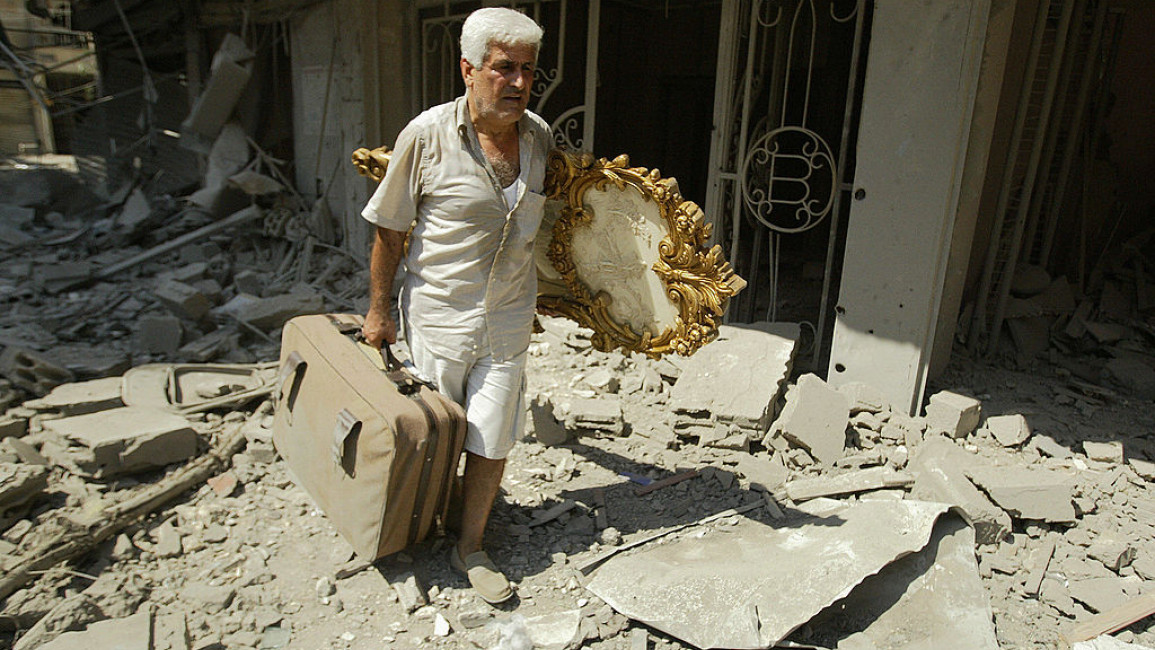
Should we re-evaluate Israel’s war on Lebanon 16 years on?
Labelled as the Second Lebanon War by Israel, and the July War by Lebanon, the 34-day conflict which took place in 2006 broke out when Hezbollah fighters ambushed an Israeli patrol in a cross-border raid, capturing two soldiers and killing three others. Five more soldiers were killed shortly after as the Israeli army attempted to rescue the captives inside Lebanon.
The context of the attack includes the ongoing conflict over the Israel-occupied Lebanese Sheba'a Farms (a small stretch of land bordering Israel, Syria, and Lebanon) and Hezbollah’s intention to swap IDF soldiers with Lebanese and Palestinian detainees in Israeli prisons.
Of critical importance here is not the first trigger; after all Israel and Hezbollah had routinely engaged in skirmishes and, sometimes, fatal exchanges in the area. The rapid escalation to war was less about Hezbollah’s actions and more about Israel’s employment of extreme disproportionality in its response.
Disproportionality is an Israeli military strategy that relies on excessive firepower and tremendous, swift unleashing of force, and is typically employed in asymmetrical warfare.
''Lebanon was put under air and naval blockade. Civilian infrastructure, including Beirut Airport and power stations, in addition to Hezbollah bases, were bombarded around the clock. Nearly 1200 people (the vast majority Lebanese civilians) were killed, and an estimated one million others were displaced. ''
Its goal is to deter protracted warfare, avoid attrition, and - because Israel lacks a strategic depth - concentrate the hostilities within the enemy’s territories.
What is not officially stated but often translated on the ground is the infliction of extensive damage on the enemy’s infrastructure that it will require them a long and expensive reconstruction process to bounce back to normality. This is meant to traumatise the enemy beyond even thinking about engaging militarily with Israel; therefore, establishing deterrence.
In reality, however, and judging by the results, what eventually transpired in Lebanon, as it would in Gaza later, was a series of war crimes coupled by a few surprising blows to Israel’s “too confident” notion of deterrence.
Within hours of Hezbollah’s attack, the Israeli cabinet unanimously approved a proposal by PM Ehud Olmert and Defence Minister, Amir Peretz, to carry out a dramatic and comprehensive military action against Hezbollah.
But as usual, operational codes in Israel’s military perception are rarely literal. The attack on Hezbollah saw Israel’s military disproportionality exceeding its already vulgar boundaries, from “attacking Hezbollah” to waging an all-out, destructive war on Lebanon.
Lebanon was put under air and naval blockade. Civilian infrastructure, including Beirut Airport and power stations, in addition to Hezbollah bases, were bombarded around the clock. Nearly 1200 people (the vast majority Lebanese civilians) were killed, and an estimated one million others were displaced.
The intensity of bombing and indiscriminate targeting almost mirrored Israel’s invasion of the country 24 years prior, and re-enacted a series of bloody attacks on Lebanon in the two decades that followed.
On July 30th, for instance, Israeli jets shelled the village of Qana in Southern Lebanon, killing 28 people, eerily repeating the scenes from the 1996 Qana massacre, when Israel targeted a UN compound where civilians took shelter, killing over a hundred of them.
In fact, the level of disproportionality, as Hezbollah’s secretary-general Hassan Nasrallah would come to admit later, exceeded Hezbollah’s expectations.
But this scale of destruction is precisely what casts doubts, especially when analysed retrospectively, on the broader incentives behind Israel’s onslaught. As opposed to the initially declared objectives of retrieving the soldiers, incapacitating Hezbollah, and creating a buffer zone in Southern Lebanon to limit the range of Hezbollah’s missiles.
The dubiety is emphasised by Israel’s failure to achieve most of the operation’s declared objectives or stop the barrage of retaliatory Hezbollah missiles hitting the heart of northern Israel - even after 34 days of intense fighting, 7000 bombs and missile airstrikes, and later, ground invasion.
By targeting Lebanon’s civilian infrastructure Israel redeployed its unapologetic policy of collective punishment and state terrorism. One of the goals was to drive a wedge between Hezbollah and the ethnically fragile Lebanese public, as well as between the organisation and the Lebanese government, hoping that will ultimately lead to the government forcing Hezbollah to disarm.
The attack on Lebanon’s civilians would later be adopted as an Israeli army policy, known as the ‘Dahiya Doctrine’, a reference to Beirut’s Shia-majority quarter and allegedly the centre of Hezbollah’s strength, which Israel bombed unceasingly throughout the war.
As such, state terrorism has been officiated as a legitimate army policy, allowing for the deliberate destruction of entire civilian areas rather than engaging in a fight to overtake fortified positions.
This doctrine would also be used repeatedly in Gaza and now, is set to be used against 160 Shia-majority villages across Lebanon should hostilities between Israel and Hezbollah erupt again.
The excessive disproportionality is also understood as an attempt by Israel to heal its wounds following its humiliating withdrawal from Southern Lebanon in May 2000. Israel also saw its military deterrence deteriorate, particularly in dealing with unconventional non-state actors, like Hezbollah and Hamas, and against which the known principles of asymmetrical warfare have proven limited.
After the war, both Hezbollah and Israel claimed victory. But what transpired was a mixed bag of “victories” and “defeats” for both sides.
Israel’s excessive use of military power proved ineffective; its collective punitive measures only resulted in war crimes and very little political outcome. The war has since been viewed as a military fiasco having failed to disarm or destroy Hezbollah. The Israeli government-appointed Winograd Commission, which was tasked with assessing the war outcome, described the Lebanon war as a "missed opportunity.”
Not only had Hezbollah survived Israel’s onslaught, it maintained consistent firepower till the last day of the war, and for the first time, managed to change the rules of engagement and transfer the battle to Israel. Its media outlets, Al-Manar TV especially, continued to broadcast uninterrupted from undisclosed locations.
Hezbollah today is much stronger than it was in 2006, even after its controversial ten-year involvement in the Syrian civil war. The organisation now far exceeds the Lebanese army in personnel, battle experience, and weaponry.
However, the then strategic victory for Hezbollah was also (and continues to be) a massive blow to the Lebanese state. Walid Junblatt, the Druze leader of the Progressive Socialist Party, commented after the war had ended - pointing at a large poster of Nasrallah that survived the bombing on the Beirut Airport autostrade, that “Hezbollah won…and today, Nasrallah’s picture is larger than Lebanon.”
Indeed, the war cost Lebanon an estimated $2.8 billion worth of infrastructure damage and triggered a 5% shrinkage in the economy. Hezbollah’s military achievements have also deepened the party’s influence in Lebanese politics, weakening the Lebanese state’s role.
The war may have also emphasised sectarian politics and increased regional intervention in Lebanon, mainly by Iran and some Gulf states.
Sixteen years after the war, the story continues. Tensions between the two countries are at an all-time high, with Israel’s infringement upon Lebanon’s Mediterranean gas, a crumbling Lebanese economy, the heightened Iranian presence in the region, and Israel’s internal political crises all serving as additional triggers.
This all leads us to the question: are we on the cusp of another attack on Lebanon?
This might be determined by whether the mutual deterrence established in 2006 between Hezbollah and Israel can withstand the unprecedented and rather pressing changes in the regional geopolitical scene.
Dr Emad Moussa is a researcher and writer who specialises in the politics and political psychology of Palestine/Israel.
Follow him on Twitter: @emadmoussa
Have questions or comments? Email us at: editorial-english@alaraby.co.uk
Opinions expressed in this article remain those of the author and do not necessarily represent those of The New Arab, its editorial board or staff.




